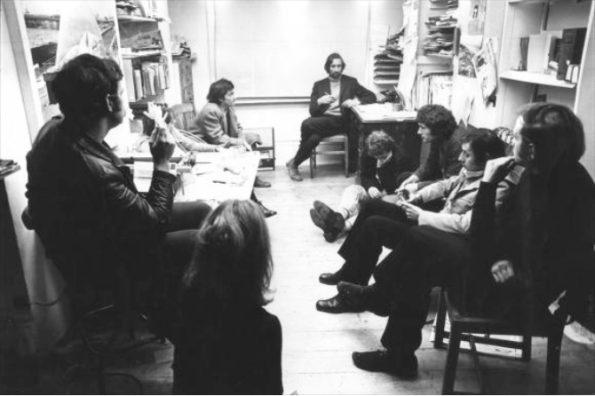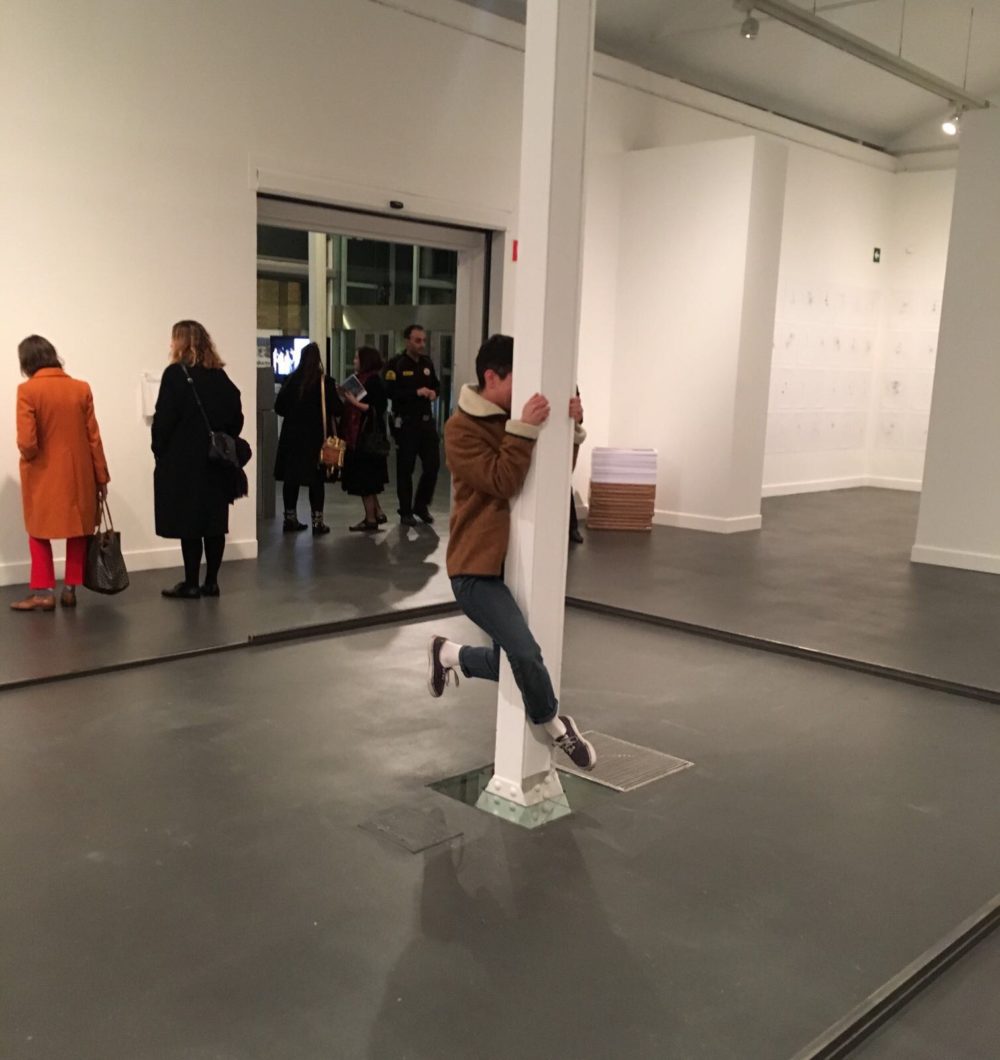Search
To search for an exact match, type the word or phrase you want in quotation marks.
A*DESK has been offering since 2002 contents about criticism and contemporary art. A*DESK has become consolidated thanks to all those who have believed in the project, all those who have followed us, debating, participating and collaborating. Many people have collaborated with A*DESK, and continue to do so. Their efforts, knowledge and belief in the project are what make it grow internationally. At A*DESK we have also generated work for over one hundred professionals in culture, from small collaborations with reviews and classes, to more prolonged and intense collaborations.
At A*DESK we believe in the need for free and universal access to culture and knowledge. We want to carry on being independent, remaining open to more ideas and opinions. If you believe in A*DESK, we need your backing to be able to continue. You can now participate in the project by supporting it. You can choose how much you want to contribute to the project.
You can decide how much you want to bring to the project.

Go out into the real world. This demand, between proposition and vindication, is one of the great projects of contemporary art, in its relatively brief history. The dissolution of the frontiers between art and life continues today to be the great aporia of contemporary art, a postulate that constitutes the raison d’être of the greater part of most art practices, which functions as an illusory but inconceivable mechanism for its very condition of being. As if everything that constituted the context of contemporary art couldn´t be included within what we designate as utilitarian and pragmatically as real.
There are abundant examples and endeavours of this taking art out beyond art (without aiming for a voluntary exile). But few are as explicit, representative and vocational as the case of the British Artist Placement Group, to which Raven Row, in London is dedicating an exhibition. In the mid sixties, Barbara Steveni and John Latham founded, with the fluctuating participation of other artists, an association that, by placing artists in an industrial and official context, pursued a relocation of the artist and his work outwith its usual habitat; the studio and exhibition space. As well as promoting art practices that projected a change of image: from that of the general vision of the artist as a day dreaming drop-out within his own ecosystem, to one of a social agent capable of contributing significantly to the governmental and commercial system. The Individual and the Organisation: Artist Placement Group 1966-79 is the exhibition project –the ranked archive- that gathers together the experiences of the APG, from the partial successes to the conclusive defeats, incorporating the immense amount of paperwork, public publications, rejected aesthetic results and the investigations and outsider viability plans.
Taking as their slogan the “context is half the work”, the APG functioned to a large extent in the following manner: negotiating the placement of the artist in companies or government departments so that, once accepted, a viability study could be carried out regarding the specific context of the host, to establish the basis for a mutual and enduring commitment. In theory–because in practice, as one could easily imagine, things weren’t quite so simple- after this fieldwork, the artist launched his proposal to the organisation, who decided to assume or not the risks (proposed as benefits) of incorporating an external agent into their rank and file. The APG also demanded a salary for the artist, who became a sort of temporary and extraordinary employee, without however becoming subject to the directives (albeit, yes the approval) of the host organisation. Bearing in mind the previous points, one could think that these proto-residencies for artists would have had a broad acceptance on the part of companies and government departments chosen by APG as destinations, by being if not viable, at least possible on paper. It wasn’t the case. Due to a small clause in the contract that avoided any hypothetical exploitation of the projects, the “open brief”, with which the APG safeguarded the freedom of the artist, by not stipulating any kind of concrete result, many organisations rejected participating in an initiative that, unlike them, believed in long term rather than short term benefits. And what could the benefits of art be (when admitting as ideal its tendency to de-structure and critically analyse) for a rigidly structured organisation perpetually seeking to increase its capital finances?
In thinking about APG as an artist’s handbook for a modus operandi, induced also by the synthesis of the concentration of its initials, it might seem that the organisation driven by Steveni and Latham was exempt from splits and internal dilemmas. However, a few years after it was set up -in 1971- frictions arose out of the internal offices of APG to be displayed to the public at large, on the occasion of its first incursion in to the exhibition space, in the Hayward Gallery in London. As well as the projects carried out up until that moment, if with anything they disassociated themselves from the traditional work of art (that nowadays merges by way of an indirect effective appropriation with the dynamics of a capitalism where there are headhunters) it was with The Sculpture: a large table that served as the support during three weeks for discussions surrounding the group, where between politicians and members of the industry, numerous internal problems rose to the surface. The lack of a manifesto, the inexistence of a defined structure, the absence of any true political commitment, the compliant adaptation to the organisations, are some of the complaints that, given the very need for contradictions, constructed an essentially discursive project. Context, process and discussion were, for the APG, a piece of art that still doesn´t know what it is.
To sympathise with APG is easy. Today, a project of this type ends up being more or less implausible than in its original timeframe. However, beyond its internal problems, the perennial question – like a signifier in search of significance – of the function of the artist within a mutant society, of the unviable hybridisation of conceptually antagonistic contexts, the questions surrounding APG could possibly be others. Do projects like APG change the social vision of the artist as an individual entity or do they serve as inspiration for implementing creativity in the rank and file of a tertiary economy? Are the possibly dilettante observations of an artist on an alien context of production pertinent and useful or do they maintain the cliché – this time in favour – of a right to meddle that is the patrimony of only a few? Up to what point is the acceptance of an artist within a company legitimate if this inclusion comes from the chain of command, making the artist be perceived as part of the very hierarchy that he is aiming to question? And last but not least, does the utility of art come out of changing the context?

artwriter_curator_esnorquelmaker_chocolateresearcher_technodancer__bikeenthusiast_coffeeaddicted_
"A desk is a dangerous place from which to watch the world" (John Le Carré)